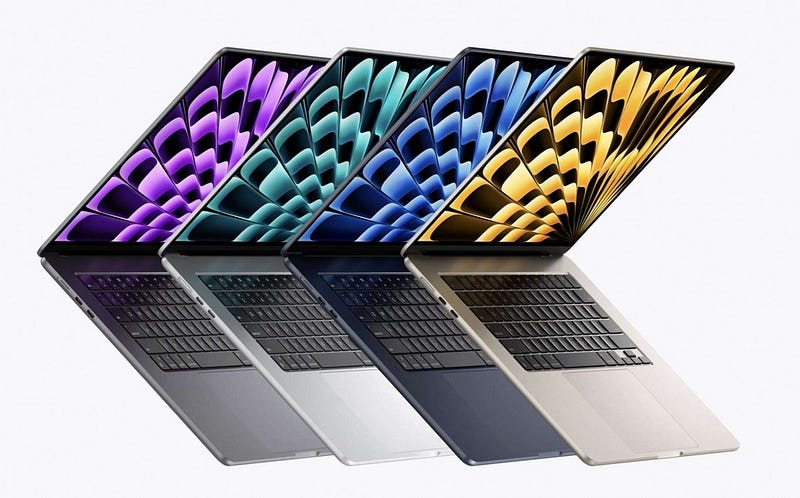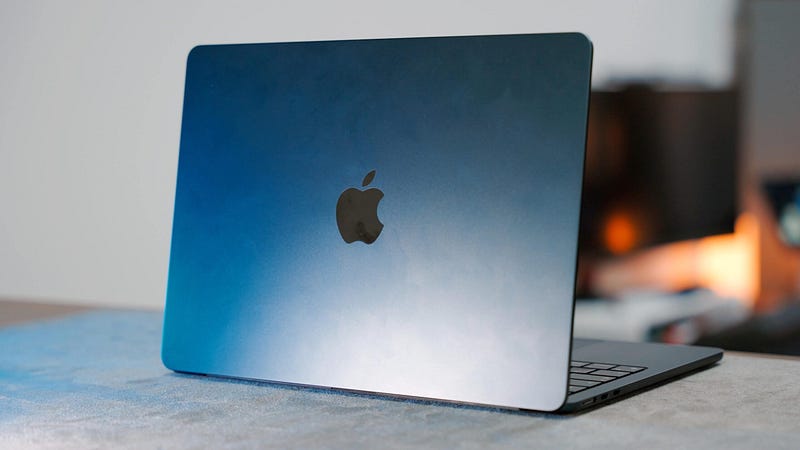How the M2 MacBook Air Performs One Year Later
Written on
Chapter 1: Introduction to the M2 MacBook Air
Apple unveiled the eagerly awaited M2 MacBook Air during WWDC22, launching it on July 15, 2022. This event created significant excitement among technology fans. A year before the M2 Air's arrival, I was already impressed by my reliable 2017 MacBook Pro, which offered a fantastic combination of power, sleek design, long battery life, and lightweight portability. However, the M2 promised to enhance these features with a more powerful processor and a reimagined, lighter design. My anticipation was palpable. Over the past year, my admiration for this laptop has only increased, and I’m excited to share my insights.
I chose the 13-inch M2 MacBook Air with an 8-core CPU, 10-core GPU, 256GB SSD, and 8GB RAM. Thanks to Apple's education pricing, I secured this configuration with a $100 discount right on launch day.
When selecting a color, I was initially drawn to the stunning Midnight MacBook Air. Its captivating gradient blue finish, despite being prone to fingerprints, ultimately won me over compared to the other options: Silver and Space Gray.

Chapter 2: Daily Usage and Versatility
On a typical day, my MacBook Air is the most utilized device in my arsenal, outpacing both my iPad and iPhone. It serves as my all-in-one tool for a variety of tasks, from banking and social media to creative projects and journaling. The distinction between my MacBook Air and my desktop lies in the diverse range of activities I engage in with each device. During work hours, it operates with my calendar and work documents open, also serving as my primary audio source for streaming Apple Music, editing in Final Cut Pro, or enjoying some online gaming during breaks (ambient music significantly aids my focus). It is also my go-to device for checking emails, responding to messages, and browsing social media throughout the day.
At home, my usage habits shift, particularly in the evenings when I spend 20–30 minutes browsing in bed. Even then, I prefer the MacBook Air for its reliability and comfortable typing experience, especially compared to an iPad with a Magic Keyboard.

Chapter 3: Portability and Battery Life
The MacBook Air’s lightweight design and compact size make it an excellent travel companion. Its access to macOS and exclusive Mac applications greatly enhances my ability to create content while on the go. While iPadOS has its strengths, certain tasks—like website adjustments, Keynote presentations, or urgent video edits—are better suited to Mac applications. During recent trips covering 700 miles to the American Midwest, I managed to publish and make last-minute video edits seamlessly, which would have been difficult with just an iPad.
Battery Life: The standout feature of the Air is undoubtedly its remarkable battery longevity. With my typical light usage during the week, I can go nearly a week without needing a charge, achieving 4–5 hours of daily use. On recent 3–4 day trips, I confidently left my MagSafe charger at home, aware that it wouldn’t be necessary. I took a USB-C cable as a precaution, but the impressive battery life in such a portable device is incredibly appealing. Recently, I’ve utilized Low Power Mode without experiencing any drop in performance, extending my battery life up to an astonishing six days before requiring a recharge.
Performance: The M2 chip marks a substantial enhancement over the M1, delivering about 20% more speed and significantly outperforming previous Intel models. For my everyday tasks, the MacBook Air handles everything effortlessly, thanks to its four efficiency cores that contribute to excellent battery life. There are very few situations where the M2 struggles, except for extremely graphics-intensive or video editing tasks. Even in those cases, the MacBook Air maintains its composure, slowing down instead of crashing or freezing. For those who have used Macs before the M1 era, it’s hard to fully appreciate the improvements in quality of life that Apple's silicon and fanless design offer. There are no compromises in performance for moderate tasks, no overheating issues, and no noisy fans during demanding use—just smooth, quiet operation.
Chapter 4: Display Quality and Overall Impression
The 13.6-inch display strikes an excellent balance for most single-window activities. While some applications, like Sketch, could benefit from a larger screen, the 13.6-inch size is ideal for daily writing, calendar management, and media consumption. I would willingly trade a bit of screen space for greater portability. Users who prefer larger laptops or have a more stationary workflow might find the 15-inch Air more appropriate. Although the 14-inch MacBook Pro offers superior display quality with its brighter MiniLED panel and 120Hz ProMotion technology, the Air’s screen holds its ground. In typical daylight conditions, the difference is minimal, as the Air provides a beautiful, adequately bright, glossy, and vibrant display featuring 500 nits of brightness and enhanced P3 color compared to Intel MacBook Airs.
Overall: The 13-inch M2 MacBook Air is an outstanding device that meets the needs of nearly all users. It stands as Apple's most efficient and compelling laptop to date. This machine is set to remain a vital part of my life for many years ahead.
Chapter 5: Real-World Experiences
This video titled "M2 MacBook Air: 6 Months Later - How It's Holding Up" offers insights into the real-world performance of the M2 MacBook Air, showcasing its durability and efficiency after extended use.
In this video, "The M2 13in MacBook Air: A Year Later," the reviewer discusses the overall performance and experience with the M2 MacBook Air after one year of usage, providing valuable feedback for prospective buyers.